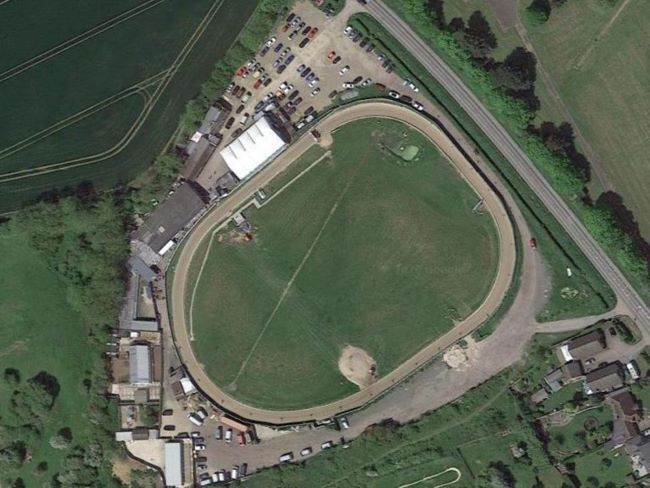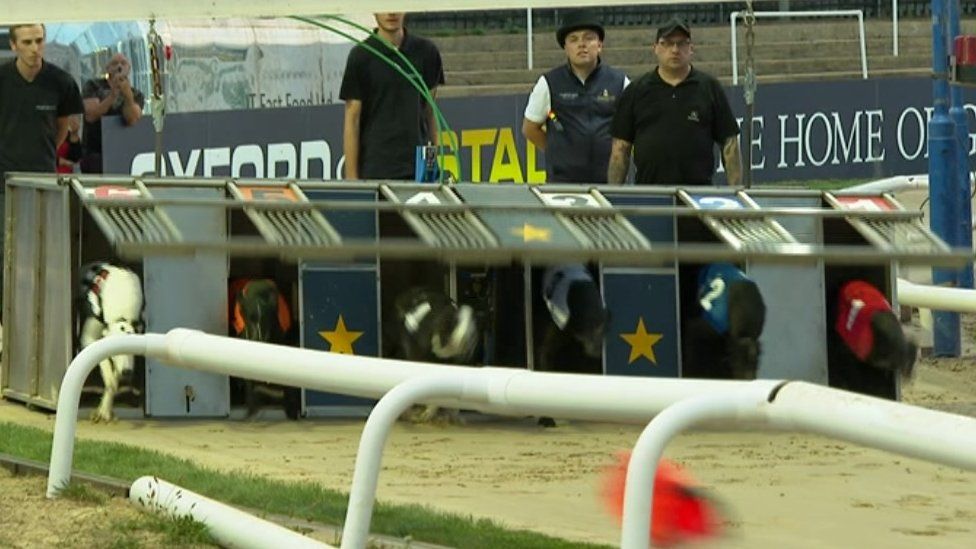Greyhound track bias is a complex but fascinating topic in the realm of greyhound racing science. Although greyhound races encompass relatively short distances, enabling all trap numbers to win at nearly even rates, certain circumstances can present what is referred to as ‘track bias’. Knowledge of track bias can provide bettors an edge in this exciting sport of luck and observation.
Illustrating Track Bias: A Case Study at Henlow Dog Track
To understand the concept of track bias better, let’s consider a recent race meeting that took place at the Henlow Dog Track. The event featured 12 races with the following results:
| Race Number | Trap Positions (1st-2nd-3rd) |
|---|---|
| 01 | 3-1-2 |
| 02 | 2-4-5 |
| 03 | 1-3-6 |
| 04 | 1-2-3 |
| 05 | 1-4-5 |
| 06 | 1-2-6 |
| 07 | 1-3-4 |
| 08 | 1-5-4 |
| 09 | 4-5-6 |
| 10 | 1-3-2 |
| 11 | 5-3-2 |
| 12 | 2-1-6 |
Astoundingly, Trap 1 emerged as the winner in 7 of the 12 races, implying a staggering 58 per cent strike rate. This figure significantly eclipses the anticipated average strike rate of 16.66 per cent for any given trap number.
Not Just Favourite Odds: A Look at the Starting Prices
A common misconception might lead spectators to believe these Trap 1 winners were all odds-on favourites. However, the actual starting prices, listed in the order of races, dispelled this notion:
Starting prices for Trap 1 winners: 2/1, 6/4, 5/2, 4/1, 5/2, 4/1, 7/2
Evidently, the rates mentioned above encompass a spectrum, emphasizing that track bias is not merely a function of the favourites’ odds. This pattern of results at Henlow Dog Track suggests that odds calculation in greyhound racing requires a mix of statistics, observation, and understanding of track biases, to profit consistently.
Exploiting Track Bias: The Potential for Profitable Betting
Imagine if bettors had prior knowledge that Trap 1 would dominate the results on a particular race day. A modest £1 win on Trap 1 for every race would have cost a total of £13-20, including tax. At the end of the day, they would have received a return of £27, yielding a profit of 13.8 points.
Surprisingly, such a scenario is not as rare as it might seem. Predicting these occurrences can be relatively simple by understanding the concept of track bias and the factors that contribute to it.
Track Bias Pattern: How Traps Can ‘Come Back’
In greyhound racing, each trap number is expected to win approximately the same number of times on average. However, occasionally, some traps undergo lengthy losing runs before suddenly re-emerging to balance the statistics. This phenomenon was observed in the Henlow Dog Track example discussed earlier.
To leverage this insight, bettors can use the following indicators to identify potential track bias opportunities:
1. Historical trends: Studying past performance trends of individual tracks, focusing on trap numbers and their winning patterns, can help shed light on possible biases.
2. Environmental factors: Observing how factors such as track conditions, weather, or recent maintenance can influence the track layout and how it affects the performance of dogs in different traps.
3. Dog performance: Assessing individual greyhound performance in different trap positions can provide insights into potential track bias, as some dogs excel in certain traps while underperforming in others.
By identifying these patterns and indicators, bettors can detect which trap numbers are more likely to emerge victorious in a given race and make more informed decisions, potentially increasing their chances of generating profits in this thrilling sport.
Profiting from Track Bias: Strategies for Predictive Betting
One of the key strategies involving track bias leans on keen observation of trap numbers, especially those that win at major BAGS (Bookmakers’ Afternoon Greyhound Service) meetings, and the comprehensive analysis of such data.
Utilising Statistical Data: Sporting Dailies to Rescue
Most sporting dailies publish ‘stats tables’ that reveal pertinent information about individual trap performance, such as the duration of each trap’s current losing run, or even the longest losing run ever recorded for that trap. This information offers valuable insights while saving bettors the hassle of maintaining elaborate charts. However, committed bettors who wish to maximize opportunities from track bias would benefit from keeping their own records.
Major Information Derived from ‘Stats Tables’:
- Current losing run: The ongoing losing streak of each trap, if any.
- Longest losing run: The record of the longest losing streak that a trap has experienced.
Professional bettors often wait until a trap’s present losing streak approaches its longest recorded losing run before placing their bets, hoping to capitalize when the losing run eventually breaks.
Physical Factors: Understanding Influence of Weather Conditions
Track bias can also emerge due to physical factors, such as weather conditions. In wet conditions, a bias often emerges towards the inner traps (1, 2, and 3). This is primarily because these dogs are closest to the rail, and thus they don’t have to run as wide as traps 4, 5, and 6 when negotiating corners.
As dogs corner on a slippery surface, they are likely to slide towards the outside of the track, creating an advantage for dogs in inner traps:
- Inner-trap dogs (1, 2, and 3) would slip outwards, likely impeding the progress of dogs in traps 4, 5, or 6.
- Consequently, dogs in the outer traps are most affected by these ‘slips’, while inner-trap dogs ‘recover’, often going on to claim victory.
These nuances of track bias – whether derived from statistical trends or influenced by physical factors – prove essential for bettors seeking to predict greyhound race outcomes and maximize potential returns.
Exploiting Physical Track Bias: A Signature Strategy

In certain instances, track bias is a direct result of the physical layout of the track itself. Henlow race track is unique in having a non oval shape and hence three bends instead of the usual two. Identifying these tracks can be done by referring to ‘stats tables’, specifically looking for traps that showcase specific characteristics.
Identifying Track Bias through Stats Tables
Bettors may identify potential track bias by noting any trap that exhibits either of the following characteristics:
- Longest ever losing run: A significantly lower ‘longest ever losing run’ figure compared to other traps.
- Winning percentage: A considerably higher winning percentage than other traps.
Traps presenting these trends often indicate the presence of track bias due to the track layout.
Betting Strategies: Combining Track Bias and Betting Market
Once a potentially biased trap is identified, bettors can pair this knowledge with market trends to make an informed decision. To clarify, if Trap 6 shows a bias over other traps, betting on a Trap 6 dog marked as a favourite in the betting market could be a wise strategy.
This method, essentially a fusion of understanding track bias with awareness of betting market trends, is lauded by many professional dog bettors. Some proudly refer to it as their ‘secret money machine’, attesting its viable and profitable nature.
Approach to Identify Probability:
- Track bias identification: Identify track bias using stats tables.
- Market trend analysis: Track current betting market trends.
- Fusing track bias with market trends: Use the combined analysis results to make an informed betting decision.
Reiterating the validity of these patterns, track bias exists and offers a real opportunity for keen bettors to realise substantial profits. Observing greyhound results with these techniques will reveal that, periodically, one trap exhibits a higher win frequency than others. With this understanding, the techniques discussed above can be utilized, turning track bias into an opportunity to profit.
In the realm of greyhound betting, understanding and leveraging track bias stands as a practical science that can simplify winning cascades into an efficient process, rather than haphazard guesswork.




